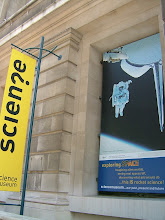Quantum spin Hall effect uncovered in HgTe
Physicists in Germany and the US have seen the first hints of an unusual solid-state phenomenon known as the quantum spin Hall effect (QSHE), in which spin-polarized electrons at the edges of an insulator are able to conduct. The researchers have seen this edge conduction in thin sheets of mercury telluride although they were not actually able to confirm that these edge electrons were spin-polarized. QSHE is interesting because it could be useful for making spintronic devices that exploit both the spin and charge of the electron.
Physicists in Germany and the US have seen the first hints of an unusual solid-state phenomenon known as the quantum spin Hall effect (QSHE), in which spin-polarized electrons at the edges of an insulator are able to conduct. The researchers have seen this edge conduction in thin sheets of mercury telluride although they were not actually able to confirm that these edge electrons were spin-polarized. QSHE is interesting because it could be useful for making spintronic devices that exploit both the spin and charge of the electron.

Spins on the edge
All physicists are familiar with the classic Hall effect, in which electrons moving in a thin sample in the presence of a transverse magnetic field experience a force that pushes them towards one side of the sample. This creates a charge imbalance that leads to a voltage across the material. In 2004, however, physicists obtained the first evidence for the "spin Hall effect", in which "spin-up" and "spin-down" electrons are deflected to opposite sides of a semiconductor. The resulting spin separation creates a spin current that is prependicular to the direction of the electric current.
The quantum spin Hall effect (QSHE) is a related phenomenon that has been predicted to occur not in conductors, but in certain very thin insulators. It involves spin-up electrons conducting along one edge of the insulator, with spin-down electrons conducting along the other side. Despite being insulators in the bulk, conduction is allowed at the edges because the interaction between the spin and orbital angular momentum of the electrons reduces the energy gap between the valence and conduction bands to zero for spin-polarized electrons.
Last year Shou-Cheng Zhang and colleagues at Stanford University in the US predicted that very thin sheets of mercury telluride (HgTe) should have the right band structure to support edge conduction. Now Zhang has joined forces with Laurens Molenkamp and colleagues at the University of Wuerzburg in Germany to find the first experimental evidence of QSHE in HgTe "quantum wells" -- sheets of material a few nanometers thick in which the electrons are confined to two dimensions.
Electrodes were attached to the wells to measure their conductance when cooled to about 30 mK. The same non-zero conductance predicted by Zhang was seen in all wells ranging in thickness from 6.3 to 12 nm. Because the conductance did not increase with well thickness, the researchers concluded that the conduction was occurring along the edges of the well, rather than in the bulk of the material.
However, wells thinner than 6.3 nm behaved like insulators – in agreement with Zhang’s theory, which predicted that very thin wells would not have the appropriate band structure for the QSHE. When the team applied a magnetic field to the thicker wells, the edge conduction vanished – again in agreement with theory.
Despite their success at seeing edge conduction, the team was not able to confirm that the conducting electrons were spin polarized. "There is certainly more work to be done in this direction," says Charles Kane of the University of Pennsylvania, who has predicted that the QSHE should also occur in very thin sheets of carbon called graphene. "But I don't think that it detracts from the importance of this experiment”, he added.
Molenkamp told physicsworld.com that the team is now exploring how a SQUID magnetic probe could be integrated within the quantum wells to measure the spin polarization of the edge electrons. And because spin-polarized edge electrons are expected to encounter no electrical resistance, edge-conducting insulators could be used in very low-power spintronic devices that use both the spin and charge of the electron to store and process information.
The researchers presented their work in Science.
Originated: http://nanotechweb.org/cws/article/tech/31344









沒有留言:
張貼留言